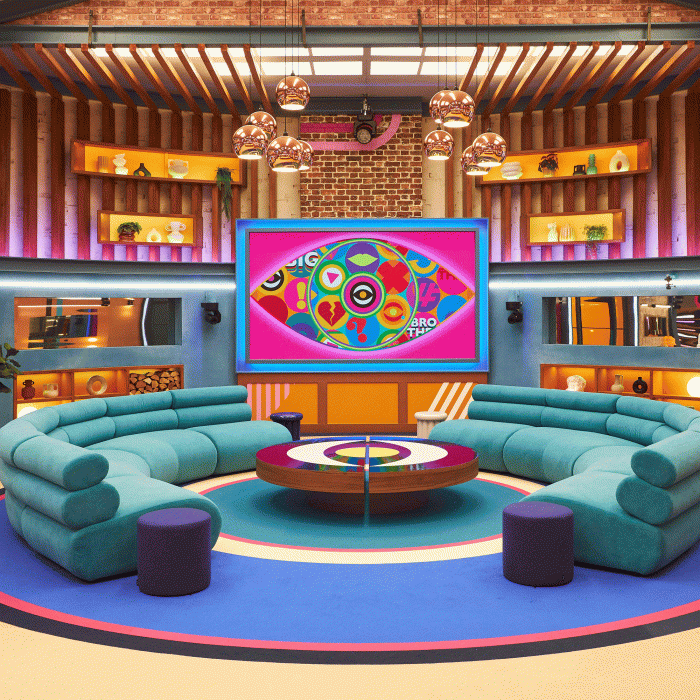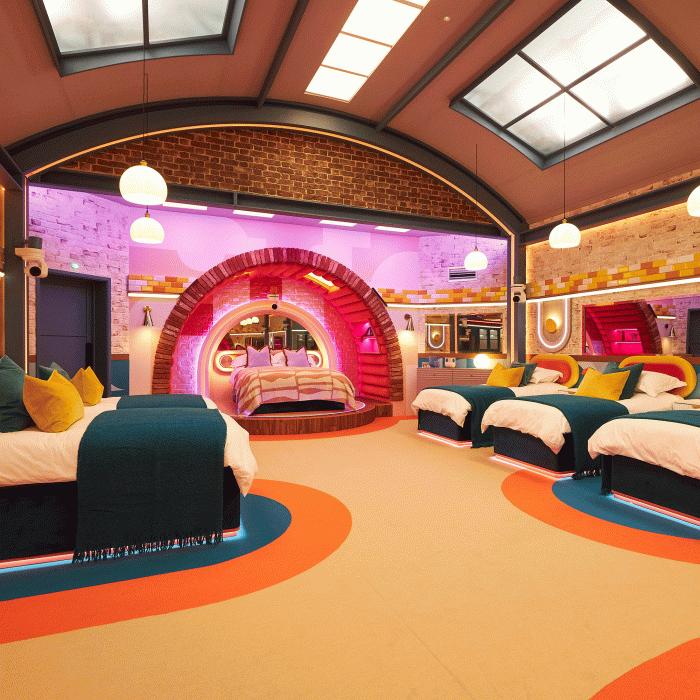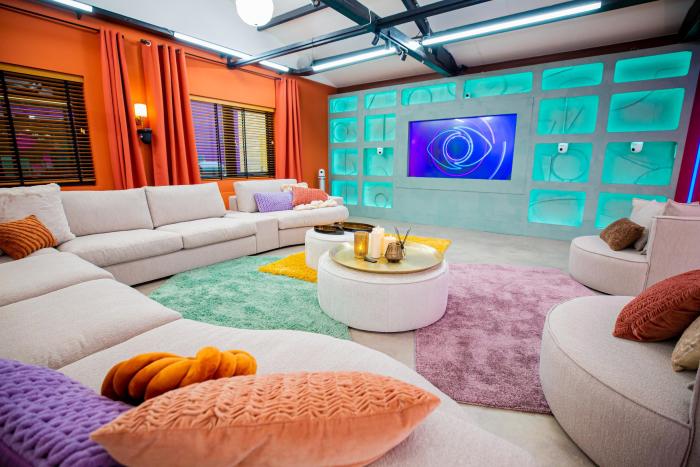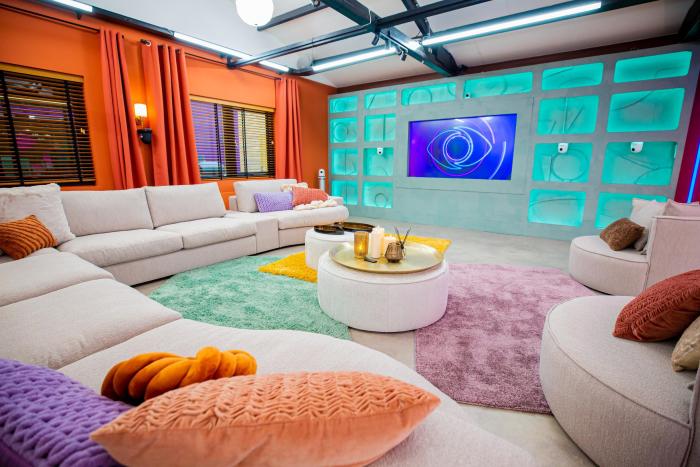Big Brother house interior design is a fascinating blend of functionality, aesthetics, and psychological manipulation. The iconic “Big Brother” reality show, with its constant surveillance and carefully crafted environments, has become a cultural phenomenon, influencing not only interior design trends but also our perceptions of privacy and social interaction.
The show’s format, where contestants live in a controlled environment, has spawned a unique approach to interior design. The “Big Brother” house is designed to maximize drama and entertainment value, with features like strategically placed cameras, microphones, and restricted spaces that influence the contestants’ behavior and relationships.
This article delves into the design elements, color palettes, furniture choices, and social dynamics that contribute to the captivating experience of the “Big Brother” house.
The “Big Brother” House as a Stage for Social Interaction: Big Brother House Interior Design

The “Big Brother” house is more than just a residence; it’s a carefully designed environment that serves as a stage for social interaction, amplified by cameras and microphones. The house’s layout, features, and specific spaces are meticulously chosen to encourage, shape, and even manipulate the dynamics between contestants.
The Diary Room: A Confessional and a Tool for Manipulation, Big brother house interior design
The diary room is a pivotal space in the “Big Brother” house, offering contestants a private space to confide in the cameras, share their thoughts and feelings, and strategize. The diary room’s isolation and confidentiality create a unique opportunity for contestants to express themselves without fear of judgment or retaliation from their fellow housemates.
However, the diary room can also become a tool for manipulation. Contestants may use their diary room sessions to strategize with producers, build alliances, or paint other housemates in a negative light.
“The diary room is the most powerful tool in the house. It allows you to get your point across to the audience and to the producers. You can use it to strategize, to vent, to make alliances, or to simply get your thoughts out.”
Former “Big Brother” contestant
The Living Area: The Hub of Social Interaction
The living area is the central hub of the “Big Brother” house, where contestants gather for meals, leisure activities, and conversations. The design of the living area, often featuring comfortable seating, a large television, and a kitchen, encourages interaction and social bonding.
The living area is where alliances are formed, conflicts erupt, and the majority of the house’s social dynamics play out.
Bedrooms: Personal Sanctuaries and Potential for Conflict
The bedrooms in the “Big Brother” house offer contestants a semblance of privacy and personal space. However, the limited number of bedrooms and the close proximity of contestants often lead to friction and tension. The bedrooms can become a breeding ground for conflicts, as contestants may feel uncomfortable with their roommates’ habits, schedules, or personal space.
The Impact of House Design on Social Dynamics
The design of the “Big Brother” house plays a crucial role in shaping the social dynamics between contestants. The limited space, the constant presence of cameras, and the carefully chosen features all contribute to a heightened sense of awareness and competition.
The Big Brother house is a prime example of how to maximize space and functionality, especially when it comes to creating a dynamic living environment. While the house itself may be quite large, it’s fascinating to see how designers create a sense of intimacy and comfort for the contestants.
It’s not unlike the challenges faced when designing a 25 sqm house interior design , where every square inch must be used effectively. In both cases, clever use of color, lighting, and furniture placement are key to creating a space that is both visually appealing and comfortable for the people who inhabit it.
The house’s design encourages contestants to form alliances, strategize, and navigate the social landscape in a way that is both entertaining and often unpredictable.
Big Brother house interior design is a fascinating blend of functionality and entertainment. The space needs to be comfortable for the houseguests, yet visually stimulating for viewers. It’s interesting to see how designers balance these elements, often incorporating open spaces and strategic camera angles.
If you’re interested in learning more about designing a home for a family, you might find inspiration in 1600 sq ft house interior design articles, which often focus on maximizing space and functionality. And while the Big Brother house may not be a typical home, the principles of good design are universal.
“The “Big Brother” house is designed to make you feel like you’re constantly being watched. It’s like living in a fishbowl. You can’t escape the cameras, and you’re always aware of the other contestants. This creates a lot of tension and anxiety, which can lead to conflict.”
Former “Big Brother” contestant
Design Inspiration from “Big Brother” Houses

The “Big Brother” house, with its carefully orchestrated environment, offers a fascinating study in interior design. Beyond its entertainment value, the show’s sets provide valuable insights into how spaces can be designed to influence behavior, encourage social interaction, and create a sense of both confinement and community.
Key Design Elements
The “Big Brother” house incorporates several design elements that can be adapted for residential or commercial spaces. These elements focus on creating a dynamic and engaging environment while considering factors like privacy, surveillance, and social interaction.
- Open Plan Living:The “Big Brother” house often features a large, open-plan living space that encourages interaction among housemates. This concept can be applied to modern homes, creating a sense of spaciousness and flow, while also promoting a sense of community and shared experiences.
- Strategic Placement of Cameras:The strategic placement of cameras in the “Big Brother” house creates a constant sense of surveillance. This element can be translated into modern interior design by incorporating smart home technology, such as security cameras and smart lighting, to enhance safety and security while providing a sense of control over the environment.
However, it’s crucial to consider privacy concerns and ensure transparency in how this technology is used.
- Designated Zones:The “Big Brother” house features designated zones for different activities, such as a kitchen, living room, bedroom, and diary room. This zoning concept can be applied to residential or commercial spaces to create a sense of order and purpose, making spaces more functional and visually appealing.
This concept can be seen in modern homes with designated workspaces, entertainment areas, or even dedicated areas for specific hobbies.
- Color Psychology:The use of color in the “Big Brother” house is carefully considered to create a specific mood and atmosphere. For example, bright colors are often used in common areas to encourage interaction, while calming colors are used in bedrooms for relaxation.
This concept of color psychology can be applied to any space, from homes to offices, to create a specific atmosphere and influence mood.
Translating Surveillance, Privacy, and Social Interaction
The “Big Brother” house presents a unique case study in how surveillance, privacy, and social interaction can be interwoven in a designed environment.
- Surveillance:The “Big Brother” house demonstrates how surveillance can be incorporated into a space without feeling intrusive. While the cameras are always present, the housemates are aware of their presence and learn to adapt to this constant observation. In a modern context, this concept can be applied to smart home technology, where cameras and sensors are used for security and convenience while maintaining transparency and user control.
- Privacy:The “Big Brother” house also highlights the importance of providing designated areas for privacy, such as bedrooms and the diary room. This concept can be applied to modern spaces by incorporating elements like soundproofing, private workspaces, or even strategically placed plants to create a sense of seclusion within a shared environment.
- Social Interaction:The open plan design of the “Big Brother” house encourages social interaction among the housemates. This concept can be applied to modern spaces by incorporating furniture arrangements that promote conversation, communal dining areas, or even dedicated spaces for group activities.
Examples of Design Principles
The design principles of the “Big Brother” house can be applied to create unique and innovative spaces.
- Co-living Spaces:The open plan living concept of the “Big Brother” house can be applied to co-living spaces, promoting a sense of community and shared experiences among residents. The inclusion of designated zones for different activities can also enhance functionality and create a more engaging environment.
- Retail Spaces:The use of color psychology in the “Big Brother” house can be applied to retail spaces to create a specific atmosphere and influence customer behavior. For example, bright colors can be used to draw attention to specific products, while calming colors can be used to create a relaxing shopping experience.
- Office Spaces:The concept of designated zones can be applied to office spaces, creating dedicated areas for different types of work, such as individual workspaces, collaborative areas, and meeting rooms. This approach can enhance productivity and create a more dynamic work environment.
Final Review

From the carefully selected color palettes to the strategic placement of furniture, the “Big Brother” house is a testament to the power of interior design to shape behavior and influence social dynamics. The show’s unique blend of surveillance, privacy, and social interaction offers a compelling glimpse into the complexities of modern life, raising questions about the ethical implications of controlled environments and the impact of technology on our sense of reality.
Expert Answers
What are some of the most common design elements found in “Big Brother” houses?
Common elements include surveillance cameras, microphones, restricted spaces like the diary room, and a variety of communal areas designed to encourage interaction or conflict.
How does the design of the “Big Brother” house impact the contestants’ behavior?
The house’s design, with its constant surveillance and limited privacy, can lead to heightened emotions, strategic alliances, and unpredictable behavior. It also encourages social interaction, as contestants are forced to spend extended periods together in confined spaces.
Can “Big Brother” house design principles be applied to real-life spaces?
While not directly applicable, the show’s focus on surveillance, privacy, and social dynamics can inspire unique design solutions for residential or commercial spaces. For example, incorporating smart home technology for security and communication, or designing open-plan spaces that encourage collaboration and interaction.




